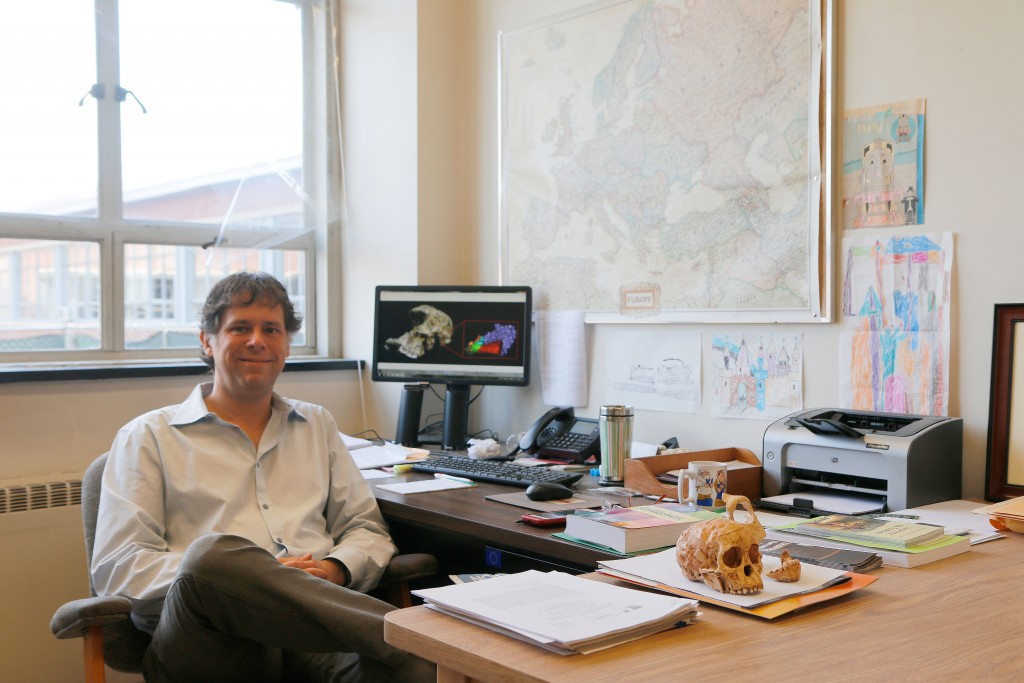
One Binghamton University professor is looking to uncover the mystery of how the earliest humans first developed their unique hearing structure.
Rolf Quam, an assistant professor of anthropology at BU, worked with researchers from Spain, Italy and South Africa to examine two-million-year-old fossils of human skulls. Quam and his team utilized Computerized Axial Tomography (CAT) scans and virtual computer reconstructions to study internal-ear anatomy.
Through this research, Quam said he is trying to determine when humans and chimpanzees began to evolve differently in regards to hearing.
“The human hearing pattern is something that evolved after we separated from chimpanzees evolutionarily,” Quam said. “After our common ancestor, human hearing changed to the way we hear today. We were interested in finding out when this human-like hearing pattern emerged in our evolutionary history.”
Quam said that he and his team have been examining fossils since 2005 and they are currently working on identifying a timeline for when evolutionary hearing differences began to occur.
In his 2006 dissertation, Quam detailed his study of 433,000-year-old ear ossicles, which are the three smallest bones in the human ear. He found fossils of these in Atapuerca, Spain. By examining these skulls, Quam concluded that chimpanzees and humans can hear a similar range of sounds. Overall, he said, humans have better hearing than chimpanzees do, but also experience sensitivities to pitches that do not affect chimpanzees.
Quam and his team then studied two-million-year-old fossils found in South Africa. These skulls were more ape-like in anatomy and features, with projecting mouth features and large teeth. The fossils still resemble chimpanzees, but have auditory features similar to that of modern humans.
According to Quam, this shows that early humans may have favored short-range verbal communication in the Savannah. He also said he plans to spearhead a new study inspired by this discovery, focusing on the style and purpose of early language.
“Human language today is different from chimpanzee communication in a number of ways,” Quam said. “Human language has a very strong symbolic component to it and chimpanzee communication in the wild does not. [Chimpanzee] communication is mainly restricted to things like communicating emotions, emotional states and perhaps communicating danger.”
As Quam continues to move forward with his research, BU anthropology and biology professor David Merriwether said he is interested to see how it affects the field of anthropology overall.
“Rolf Quam’s research gives us exciting new insights into the capabilities of some earlier members of the tree that leads to modern humans,” Merriweather said. “There were many more species in our genus over the last million years than are alive now, and this research reveals fascinating attributes some of these species possessed.”
According to Siobhan Hart, an assistant anthropology professor at BU, Quam’s research is vital to the discovery of humanity’s shared history with other species.
“Dr. Quam’s research expands our understanding of the senses of our hominid ancestors,” Hart said. “It forges new directions in the study of human evolution and further complicates what it means to be human.”


